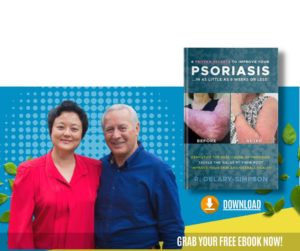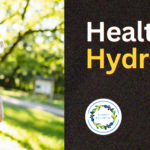Are there different types of Psoriasis?
Millions of people around the world suffer from Psoriasis, a chronic skin condition. Many people do not know that Psoriasis can occur in different forms, each with its own symptoms and challenges, even though it is commonly recognized by its red, scaly patches. In order to diagnose and treat effectively, it is important to understand these different types.
Types of Psoriasis
Plaque Psoriasis
The most common type of Psoriasis is Plaque Psoriasis, also known as Psoriasis vulgaris, affecting approximately 80-90% of patients with Psoriasis. It is characterised by elevated, inflamed and red patches of skin that have silvery white scales. These plaques are usually found on the elbows, knees, scalps and lower backs, but they can develop on any part of the body.
The symptoms of Plaque Psoriasis may vary greatly, from mild patches to large and dense plaques that can be itchy or painful. In addition to the discomfort, the affected skin may blister or bleed. The patches may appear purple or dark brown with grey scales on darker skin tones.
For the medical community, it is not yet clear exactly why Plaque Psoriasis occurs, but it involves an overactive immune system that causes skin cells to grow more rapidly. The condition may be aggravated by genetics and environmental triggers, such as stress, infections, skin injuries or some medicinal products.
Plaque Psoriasis can be managed with various natural remedies that help alleviate symptoms and reduce flare-ups. Relieve inflammation by drinking apple cider vinegar (ACV) diluted in water and mixed with honey and lemon juice or enjoy it as a dressing for your salads. In addition, soaking in a warm bath of Dead Sea or Epsom salts can help lift scales and reduce itching.
Did you know there are different Types of Psoriasis? We will cover the different types from head to toe! Learn how to combat each type with different tips as you go through and watch our videos!
Guttate Psoriasis
Guttate Psoriasis, which is characterised by small, droplet shaped lesions on the skin, is a distinct type of Psoriasis. These lesions, often pink or red, may appear suddenly and are usually spread out in the trunk, arms, legs as well as on the scalp. The spots in Guttate Psoriasis are smaller and thinner than Plaque Psoriasis, but they can still be itchy and uncomfortable.
Bacterial infections, such as strep throat, are often associated with the development of Guttate Psoriasis. In children and young adults, these types of Psoriasis are more frequent. The lesions may develop within a few weeks of the initial infection, which is why it is important to take into account recent illnesses when identifying this condition.
Guttate Psoriasis can be managed with several natural remedies that help alleviate symptoms and promote healing. By promoting the production of vitamin D, which has a neutralising effect on inflammation, moderate exposure to sunlight can be beneficial in reducing Psoriasis lesions. Additionally, reducing inflammation may be helped by the consumption of Omega-3 fatty acids found in fish oil. It may also be helpful to take Omega-3 supplements.
The treatment of Guttate Psoriasis involves addressing both the skin symptoms and any associated infection or trigger. Many people have significant improvements with appropriate care and treatment, but some may go on to develop other types of Psoriasis.
Request for our free guide 6 Proven Secrets To Improve Your Psoriasis.
If you are suffering from Psoriasis, discover natural proven techniques to improve and even completely reverse your condition by enrolling in our online course Psoriasis Expert Secrets.
Inverse Psoriasis
Inverse Psoriasis, also known as flexural Psoriasis, is a specific type of Psoriasis that mainly affects the skin folds and areas where the skin rubs against each other, such as the armpits, groyne, under the breasts, and around the genitals and buttocks. Inverse Psoriasis is characterised by smooth, red lesions that look shiny and lack scales compared to other forms of Psoriasis with thick, scaly patches. As it often resembles other skin diseases such as fungal infections, this may be difficult to diagnose.
Symptoms and Triggers
Inverse Psoriasis is characterised by the following symptoms:
– Bright red, inflamed patches of skin
– Smooth and shiny lesions that do not scale as in other Psoriasis types
– Pain and discomfort, particularly in areas which are subject to friction and sweating
Inverse Psoriasis flare ups are commonly triggered by the following:
- Friction from skin-to-skin contact
- Sweating, which can worsen irritation in the areas it affects
- Fungal infections, which are more frequent in these moist areas
Treatment Options
Due to its location in the skin folds, Inverse Psoriasis may be particularly difficult to treat. Symptom relief can be helped by a number of natural remedies:
- You can keep your skin hydrated and reduce irritation by regularly using a fragrance-free moisturiser. To lock in moisture, it’s best to use a moisturiser immediately after bathing.
- Aloe vera, known for its soothing properties, may reduce redness and inflammation. In the affected areas, apply the gel directly.
Do you or someone you know have Psoriasis? Are you aware of the types of Psoriasis Treatment and what your options are? Watch and learn from our insightful video on Types of Psoriasis Treatment.
Pustular Psoriasis
Pustular Psoriasis is one of the rarer forms of Psoriasis, characterised by the presence of white, pus-filled blisters (pustules) on the skin. Unlike infections, pus in Pustular Psoriasis is not infectious and consists primarily of white blood cells. The skin around the pustules is usually red and inflamed.
Types of Pustular Psoriasis
There are different types of Pustular Psoriasis, each having its own characteristics:
Generalised Pustular Psoriasis (GPP)
This severe form, also known as von Zumbusch Psoriasis, may affect large parts of the body and is often accompanied by systemic symptoms such as fever, chills or fatigue.
Palmoplantar Pustulosis (PPP)
This type primarily affects the palms of the hands and the soles of the feet, causing pustules and significant discomfort in these localised areas.
Acropustulosis
A rare form affecting the tip of the fingers and toes, which could lead to changes in the nails and, in severe cases, loss of the nails themselves.
Symptoms
The appearance of pustules, which may be painful and tender, is the primary symptom of Pustular Psoriasis. These pustules can be dried and peeled off, but they’re often reappearing in cycles. Systemic symptoms such as fever and chills may also occur in GPP, making it a medical emergency that requires immediate treatment.
Causes
For the medical community, it is not entirely clear why Pustular Psoriasis develops, but it has been suggested that this condition may involve an abnormal immune reaction. Triggers can include infections, stress, certain medications, and withdrawal from systemic steroids.
Treatments
Several natural remedies may help alleviate symptoms of Pustular Psoriasis and support overall skin health like the following, for example:
- A soothing soak can be provided by adding ground oatmeal to lukewarm bathwater, which helps to relieve itching and discomfort.
- Turmeric, known for its anti-inflammatory properties, may be taken as a supplement or added to food. This may help to decrease the severity of Psoriasis symptoms.
Erythrodermic Psoriasis
Erythrodermic Psoriasis is a severe and uncommon form of Psoriasis characterised by widespread redness and inflammation on most of the body’s surface. The main points of this condition are outlined below:
Symptoms
Intense redness, scaling, and shedding of skin occur in people with Erythrodermic Psoriasis. It may look as if it’s been burnt, and the skin can often feel a bit hot and painful. This may cause fluid and electrolytes imbalances, as well as an increase of heart rate and body temperature in serious cases.
Causes
Severe sunburn, sudden discontinuation of systemic therapy for Psoriasis, or use of certain medications, can trigger this condition. It’s most common in persons with unstable Plaque Psoriasis.
Treatment
In addition to conventional treatment for Erythrodermic Psoriasis, some natural remedies may be helpful:
- Applying cool compresses to affected areas can help alleviate discomfort and reduce inflammation.
- Capsaicin, which is found in chilli peppers, may be applied topically in the form of creams or ointments to relieve pain and itching.
Prognosis
If not promptly treated, Erythrodermic Psoriasis may develop into a life-threatening disease. However, it is possible to successfully manage the condition and symptoms with adequate medical care.
Are you suffering a certain type of Psoriasis? Have you ever wondered what the main causes are? Have you been to different doctors or healers? Oftentimes, you might get some sort of relief but you don’t get FULL relief. Find out the main causes by watching the video, What are the main causes of Psoriasis?
Nail Psoriasis
The subtype of Psoriasis, which is a chronic inflammatory skin condition that can affect the joints, is Nail Psoriasis. They cause changes in the nails, including pitting, discoloration, thickening, rupturing and detachment. These symptoms may cause discomfort and can affect the quality of life as a whole.
Symptoms and Appearance
- Colour Changes: Nails may turn white, yellow, or brown
- Surface Abnormalities: Nails may become rough or develop a chalky white material
- Debris Build up: Beneath the nails, chalky white material may accumulate
Treatment
Here are some natural remedies that may help to alleviate the symptoms of Nail Psoriasis:
- There may be benefits to treating Nail Psoriasis with some herbal medicines, such as indigo naturalis, a Chinese herbal medicine.
- The anti-inflammatory and antifungal properties of tea tree oil may help to treat Nail Psoriasis symptoms by applying tea tree oil to the affected nails.
Psoriatic Arthritis
Psoriatic Arthritis (PsA) is a type of inflammatory arthritis that affects individuals with Psoriasis. Although Psoriasis and PsA are related, they have distinct symptoms.
Different Types of Psoriatic Arthritis
Asymmetric Psoriatic Arthritis
This type involves different joints on each side of the body and may be limited to several or more joints.
Symmetric Psoriatic Arthritis
Similar to Rheumatoid Arthritis, Symmetric Psoriatic Arthritis affects the same joints on both sides of the body, unlike Asymmetric Psoriatic Arthritis.
Distal Psoriatic Arthritis
Distal Psoriatic Arthritis mainly affects the joints closest to the nails, such as the fingers and toes. It may cause changes in nails, including pitting and discoloration.
Spondylitis
This type of PsA primarily affects the spinal and pelvic joints, leading to stiffness, pain and decreased mobility.
Oligoarticular Psoriatic Arthritis
Oligoarticular PsA is often less severe than other types, affecting fewer than 5 joints. Joint swelling and pain can occur.
In its appearance and severity, Psoriatic Arthritis can vary greatly from symptom to symptom. Managing symptoms, preventing joint damage, and improving one’s quality of life requires early diagnosis and appropriate treatment.
Learn from our informative video, Natural Psoriasis Treatments.
Conclusion
Psoriasis, a chronic skin condition, affects millions of people around the world. It appears in various forms, even though it is recognised by red, scaly patches. For accurate diagnosis and treatment, it is crucial to understand these different types of Psoriasis. Each has its own set of challenges, from common Plaque Psoriasis to rare Pustular Psoriasis and even Nail Psoriasis. Psoriatic Arthritis, distinct from Psoriasis, adds another layer of complexity. Recognition of these various manifestations, as well as tailored treatment needs to be ensured in order to effectively manage them.
Are you dealing with Psoriasis and looking for an effective, holistic solution? Look no further! Book a free 15 minute discovery call with us at Planet Wellness to take the first step towards healing. During this call, we will show you how we can provide personalised insights on treating and healing Psoriasis using Iridology and Nutrition. Let us show you how our organic health solutions can help alleviate your symptoms and improve your quality of life. Don’t let Psoriasis hold you back any longer, schedule your consultation today!
Unlock the secrets to managing and even reversing Psoriasis with our affordable course, “Psoriasis Expert Secrets“. With proven natural remedies included, this course offers invaluable insights to alleviate your symptoms and promote healthier skin. Don’t miss out on this opportunity to gain access to expert knowledge that can transform your life. Enrol now and take control of your Psoriasis journey. Invest in yourself today and say goodbye to Psoriasis woes. Click here to enrol and start your path to healthier skin!
Our FREE Guide Reveals 6 Proven Secrets To Improve Psoriasis In As Little As 8 WEEKS OR LESS! Get our FREE guide here.
To learn more about Psoriasis, check out our other related blogs:
How To Get Rid of Psoriasis Using Iridology
What Is The Main Cause Of Psoriasis?
When Does Psoriasis Start To Heal?
How To Heal Psoriasis Naturally
NEXT STEPS
Book in a complimentary 15 minutes Zoom call with us (valued at £99) to enable us to clarify questions you may have on a specific health concern.





